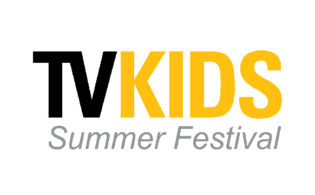SLR Productions’ Suzanne Ryan, Super RTL’s Lisa Albers and ABC Australia’s Michael Drake discussed how the new animated co-pro Space Nova, distributed by ZDF Enterprises, came together ahead of the show’s premiere at the TV Kids Summer Festival.
Space Nova is set in 2162 and follows the Australian space-exploring Nova family. The project emerged from a meeting at MIPCOM in 2016 with Super RTL, said Ryan, founder, CEO and executive producer at SLR. “We had a quick discussion about a family space adventure. SLR had been making The Skinner Boys, a family adventure. That’s where the idea spun from. We came back early in 2017 and pitched Space Nova.”
Read excerpts of the session below and watch the entire panel, with the premiere episode, here.
Super RTL was already on board when the project came to ABC Australia, said Drake, development executive for children’s content at the Australian pubcaster. “We love working with our international partners. We’ve worked with Super RTL and ZDFE before. We know how much they are able to bring to a project, so having them attached, it was something we were happy to come on board with. The idea itself has such appeal that it worked well for us as well. We need to have some kind of Australian lens or POV, but also because it has such a large scale and such an amazing adventure element to the stories, it has that international appeal as well. That works well for us and for the model itself to be able to finance the entire project.”
Albers, senior editor at Super RTL, said the process moved quite quickly after receiving the pitch from SLR in early 2017, with the show in development by the fall of that year.
SLR had only produced animation in 2D before Space Nova, Ryan said. “We designed the show looking 2D. Having a show set in space needed to have bigger production values, more creative, and from that, the idea was flagged, let’s try CGI. So off we went!”
Albers added, “We always have these epic space adventures in mind, so CGI felt like the right choice. Also, for us in access prime time particularly, we have a lot of CGI shows, so we felt it would fit the environment.”
The show was financed among “a lot of incredibly supportive partners,” Ryan said. “A show like this does take quite some time to make. We worked with a great production partner in Malaysia called Giggle Garage. They are responsible for the animation and the beautiful lighting and everything you see there. SLR has done the scripting through to preproduction and post. Between our two countries, we’re able to bring some great incentives in tax credits and government funding. Also, we have ABC and Super RTL as our broadcast partners, as well as Nine Network. We also have two distributors: ZDF Enterprises, the worldwide distributor, and the Australian Children’s Television Foundation as the Australian distributor.”
“Australian kids’ TV producers like Suzanne are incredibly talented and experienced in being able to pull all these disparate sources of finance together,” Drake added. “It’s like looking at this amazing patchwork. It takes an enormous amount of experience and knowing how to pull all of those levers to make all of them work in harmony.”
Real science is interwoven into the series. “We knew the Australian Space Agency was going to be launched. We engaged Karlie Alinta Noon, an indigenous scientist and an astronomer, as a consultant. She read all the scripts and would come back with a way for us to have a fantasy in space yet lean on real science at the same time.”
One of the elements that makes the show unique is its 26-episode story arc. “Our audience loves a strong story engine,” Drake noted. “But the episodes are still really satisfying and stand alone, so if someone were to come in on episode eight, it resolves satisfyingly for them, but hopefully there’s enough there that they will want to go back and watch the entire story all the way through.”
“That was important for us as well,” Albers added. “We wanted standalone episodes while still having the light arc. There’s a deep narrative that pulls us through, but still, you can really watch the individual episodes and then go back and watch the others you missed. The science was also important for us. It’s somehow based in science and real physics, but then it goes larger-than-life. I even called my dad, who is a physicist, and discussed it with him: if we want to go to a black hole, how would time evolve?”
Drake went on to note that the stories are all driven by the kid protagonists, siblings Jet and Adelaide. “Even though these are epic sci-fi stories, and they push science to the brink, they are all still based on issues that are important to Jet and Adelaide and relatable to the audience, so it’s about self-actualization or wanting the latest technology or to show their independence. All of the stories are grounded in character. [The kid protagonists] set the events in motion, drive the story and resolve the story. They are empowered and aspirational as characters as well. The tone of the show is hopeful. And the sheer escapism of the whole thing transcends any borders.”
The panelists also talked about the show’s co-viewing potential. “Space Nova has that access point for everyone,” Drake said.
“Parents are always at the back of our minds,” Albers added, “whether they are watching or just listening to it. If we want to draw them to the screens as well, the family setting [of Space Nova] is super important.”
Following the panel discussion, TV Kids Summer Festival premiered Space Nova.
 TVKIDS
TVKIDS






